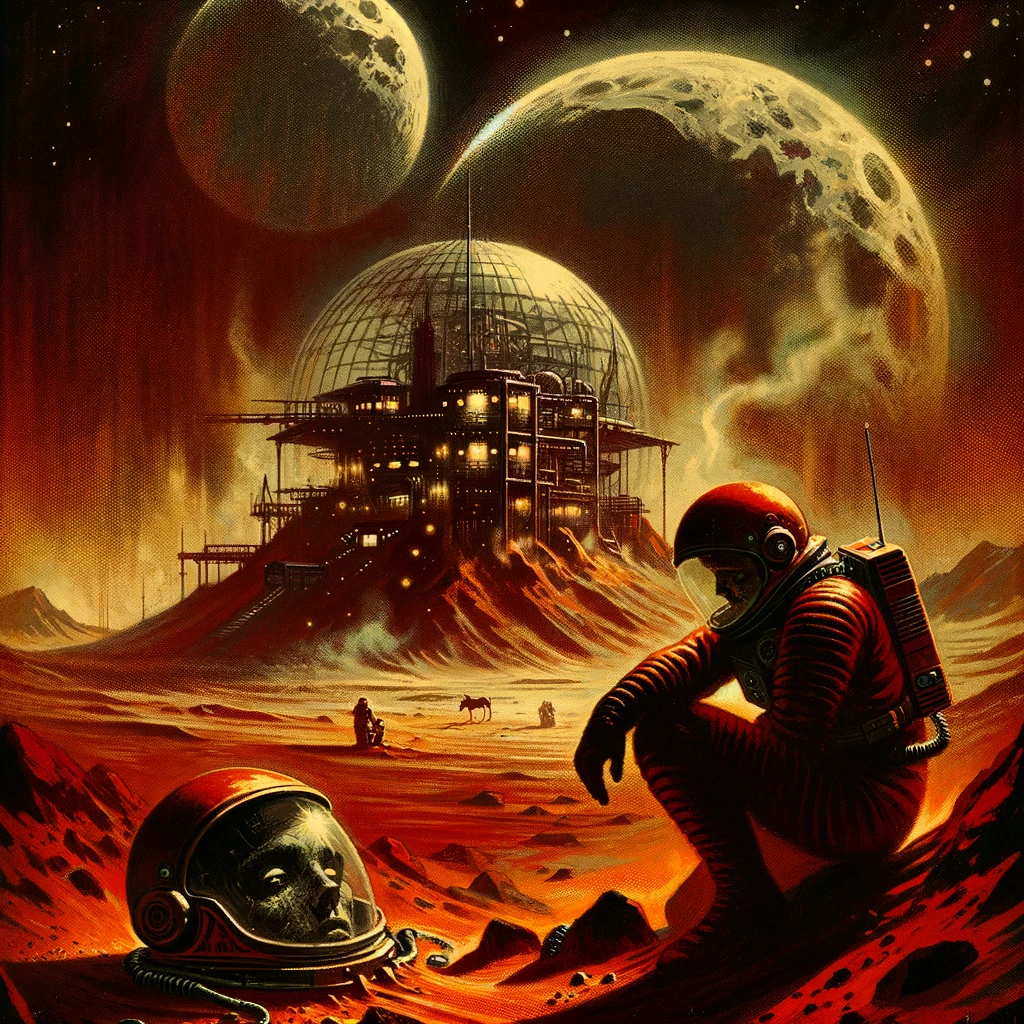
The dream of Mars is seductive—a rust-colored promise of new frontiers. Yet, behind this allure lurks a web of dangers so intricate, so visceral, that pursuing this ambition may be the most reckless gamble humanity has ever considered.
Our species tends to romanticize exploration. But Mars is not the New World. It is a barren wasteland orbiting under an unforgiving sun, a world where every element conspires against human life. The human body—fragile, complex, and evolved for Earth's cradle—will unravel under the weight of this hostile frontier.
The Space Radiation Death Sentence
Beyond Earth's protective magnetosphere, space radiation is a silent executioner. Astronauts heading to Mars will endure galactic cosmic rays (GCR) and solar particle events (SPEs), bombarding their cells with highly energetic particles capable of tearing through DNA strands like cosmic shrapnel.
This isn't the mild radiation we encounter during a transatlantic flight. It's a relentless assault leading to elevated risks of cancer, cardiovascular disease, and cognitive decay. The radiation will not just kill slowly—it could warp the very genetic codes of future generations if any were born in such an environment. The mechanisms of this damage are not fully understood, and NASA’s mitigation strategies remain speculative at best.
The Psychological Abyss
Mars is far. So far that conversations with Earth will suffer a communication delay of up to 22 minutes. Imagine the creeping isolation—knowing help cannot arrive, knowing that Earth is a distant, silent star.
Behavioral health risks loom large. Prolonged isolation and confinement have profound psychological effects: depression, anxiety, and cognitive decrements. The mind, untethered from familiar rhythms, can fracture. History whispers warnings—psychological breakdowns on missions like Skylab 4 serve as grim precursors. On Mars, there will be no escape from the suffocating walls of a habitat, no reprieve from the red dust outside.
The Fragility of the Human Body
Spaceflight-associated neuro-ocular syndrome (SANS) already affects astronauts on the International Space Station. Long-term missions threaten irreversible vision damage, as fluids shift in the body, flattening eyeballs and impeding optic nerves.
Mars will magnify this. The planet's gravity—merely 38% of Earth’s—will wreak havoc on bones and muscles. Even with rigorous exercise, astronauts will return with brittle skeletons and atrophied hearts, assuming they return at all. The body is designed for Earth’s embrace, not Mars’ indifferent pull.
Starving on a Dead World
Food and nutrition—simple yet vital—become perilous in space. On Mars, resupply missions are impractical. NASA’s current food systems cannot sustain life for the three-year round trip. Malnutrition will not merely weaken; it will kill.
Moreover, the Martian soil is laced with perchlorates—chemicals toxic to humans. Growing food there requires complex, energy-intensive purification systems. One failure, one miscalculation, and starvation becomes inevitable.
When Technology Fails, So Does Life
Every breath, every drop of water on Mars will rely on life-support systems—fragile machines operating millions of miles from Earth. On the ISS, failures are frequent but fixable. On Mars, a malfunction could mean death in hours.
There will be no quick rescue, no emergency shipments. The Martian environment—dust storms that can last for months, temperatures colder than Antarctica—will punish any mistake with swift finality.
The Ethical Abyss
What moral calculus justifies sending humans into an environment where survival hinges on perfection? Who bears responsibility when lives are lost for the sake of ambition? The journey to Mars risks human lives in pursuit of a dream that technology, biology, and ethics are not prepared to support.
Conclusion: Mars Must Remain a Dream—for Now
The allure of Mars is undeniable, but desire does not equate to readiness. We stand at the precipice of technological hubris, mistaking capability for wisdom. The human body and mind are ill-equipped for the Martian crucible. Until science can guarantee survival without risking lives in the void, humanity must resist the siren call of the Red Planet.
Mars is not the next step. It is the final fall, should we leap too soon.
My sources are your sources (Except for the confidential ones) : Patel, Z.S. et al. Red risks for a journey to the red planet: The highest priority human health risks for a mission to Mars. npj Microgravity (2020).